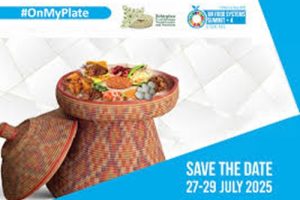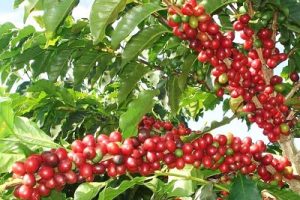
Ensuring food security is a strategic issue worldwide because it is considered in both spatial and temporal contexts. Yes, securing the availability of food somewhere in a country does not ensure food security in other areas. At the same time, securing food availability today does not guarantee its availability tomorrow.
Therefore, parameters such as rapid population growth, urbanization, changing consumption patterns, and globalization, as well as climate change and depletion of natural resources, must be kept in mind while planning the issue of food security.
Ethiopia is also one of the countries not yet ensured food security for a number of reasons. To address the challenge, the nation is working to ensure food security and to this end, it needs to mobilize its resources and modernize the agriculture sector.
In this edition, the effort of the nation to produce Enset will be covered. One of the peculiar characteristics of Enset is while other crops like coffee and grains wither, the Enset plants withstand both droughts and heavy rains. In fact, it can survive up to seven years without rain by storing water in its leaves.
“One of the unique qualities of the Enset is that it will always be around as a backup plan,” said Gebre Ynitso, an associate professor who studies the plant in the Department of Social Anthropology at Addis Ababa University. Adding he said, “It’s like money in the bank.”
All parts of the Enset plant are edible. The root of the Enset is boiled and served with meat, while the trunk and stalks are fermented and eaten with bread or porridge. The root of the plant can even be made to last a number of years by placing it in a 2-meter deep pit, with yeast and starch to ferment it.
The Enset plant can also feed livestock, allowing families a form of protein during famines and droughts. The leaves that fall from the Enset plant also improve soil fertility. However, the Enset plant is a staple food only to 20 percent of the Ethiopian population, as most see the plant as inferior as and harder to cultivate than grains.
Some universities in the southern part of the country are working on the development of the plant. Arba Minch University, for instance has built an “Enset Park” to provide local farmers with seeds and other materials needed to plant Enset.
Dilla University also hosted “Enset on Wheels” food carts, and prompted other food festivals to take place. For example, a festival in Gedeo showed local farmers the versatility of Enset by presenting 32 different meals using the plant.
Wolde Tadesse (PhD), a visiting researcher at the African Studies Department at Oxford University in the UK said: “What’s important about the Enset is that it keeps the family alive. It’s the backbone for the livelihood of the family and community.”
This is because of its unique characteristics of withstanding both droughts and heavy rains and capability to survive up to seven years without rain by storing water in its leaves while other crops like coffee and grains wither.
Though Enset crop is found in sub-Saharan Africa and Asia, but it is domesticated and cultivated as a food crop only in Ethiopia. Enset, which is a large perennial herbaceous crop native to Ethiopia, is highly stapled to approximately 20 million people in the southern, eastern, and central parts of Ethiopia. It is a common practice in the agricultural system of these areas, making these areas Enset belt regions of the country.
Arba Minch University researcher and lecturer, Addisu Fekadu (PhD) said that the crop which has huge nutritional content and alternate potential for food security for the country, it has not been fully utilized and even appropriately recognized yet.
He further noted that Enset is rich with various nutritional nutrients; has paramount effect especially in fighting stunting in different parts of Ethiopia.
“Enset is a climate resilient crop. So whether we agree or not, it is going to be the future crop or super food because there is no other crop that can resist drought,” he stressed.
Apart from that, the crop gives high yield as compared to other cereals like wheat, maize and teff, he added.
Unlike other crops, Enset gives high yield from a single plant. “A single plant can give on average about 120kgs of edible product,” the researcher pointed out.
“First, we have high yield; second it is climate resilient crop and that produces highly nutritious food. So you cannot get much food within a small area other than that of Enset. We therefore, strongly encourage the government or any other stakeholder to scale-up Enset growing in all parts of the country, especially in the north that has huge potential to cultivate the plant.”
Pointing out that Ethiopia had imported wheat worth one billion USD in 2020/21, while there is huge Enset reserve in the southern part of the country, Addisu hastened to add that “I can confidently say that Enset is a highly marginalized crop.”
According to the researcher, there is no or fragmented intervention to improve Enset productivity, process of its fermentation and expand it across the country. He urged the Agricultural Transformation Agency and other pertinent institutions to give due attention to scale-up Enset growing in all parts of the country.
The researcher stated that Arba Minch University has been working to promote foods produced from Enset in the country and abroad. Addisu is convinced that Enset will be one of the top Ethiopian export crops in the next few years.
The researcher said, “We are promoting Enset-based food products, meaning high-quality and value-added Enset-based products which are developed at Arba Minch University. So, we have been sending our products as a promotion to Kenya and the USA. I am quite sure that within the next 5 years, Enset is going to be among the top 10 crops that can be exported.”
Enset crop is known by various names in different parts of the country. It is Asset for the Gurage, Workie for the Oromo, Wase for the Sidama, Enset for the Amhara and Uto for the Kaffa, among others.
As the issue of food security has remained a sensitive issue in the hearts of the United Nations Programs, capitalizing effort in improving productivity should be well managed. The Food and Agriculture Organization (FAO) also recommends widening preferable food choices beyond being local staples to satisfy consumers’ preference for taste and quality. Furthermore, the United Nations (UN) Sustainable Development Goals (SDGs) adopted in 2015 stressed the need to transform agriculture and food systems to end hunger, achieve food security, and improve nutrition by 2030.
BY MENGISTEAB TESHOME
THE ETHIOPIAN HERALD SUNDAY EDITION 22 MAY 2022





